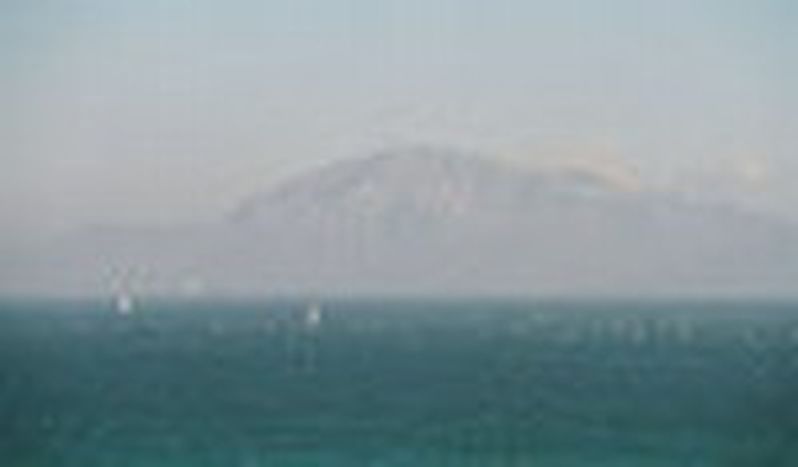
Europe, fortress or promised land?
Published on
Translation by:
 lucy collins
lucy collins
The deaths of illegal immigrants attempting to scale the barbed wire fences surrounding the enclaves of Ceuta and Melilla in September reminded the EU of the gravity of the problem of illegal immigration. An urgent solution is needed.
18 million Africans are currently fleeing civil war or torture as well as poverty and a lack of prospects in their native countries, according to statistics from the United Nations Environment Programme. As Michael Jandl, a researcher at the International Centre for Migration Policy Development highlights, it is for the most part qualified young people from middle or upper class backgrounds who find the financial means to arrive at the borders of the ‘promised land’ from the Gambia, Mali or Nigeria. They attempt to scale the electric fences of the European enclaves Ceuta and Melilla in North Africa; or pay 1,000 euros for a journey across the Strait of Gibraltar on inflatable rafts, contributing to the 4 billion euro annual turnover generated by people smugglers engaged in trafficking towards Europe. Those who reach Spanish shores seek political asylum, a status that Spain is legally bound to concede according to international law but which, in actual fact, only 8% of applicants obtain.
Border control and deportation
What response has Europe initiated in relation to the influx of ‘desperados’ ever more determined to cross the threshold of the EU? Raising the height of frontier fences once again (from 3 to 6 metres after having reinforced them in 2001), increasing the presence of the Spanish military coastguards and putting a tighter watch on Moroccan coastlines - the responses in recent years have mostly been on a national scale and seem to be effective: since the year 2000, the number of Africans crossing the border at Ceuta and Melilla has decreased from 10,000 to a few hundred annually. And if requests for asylum in Europe have been halved since 1995, the number of deportations has multiplied in recent years.
These figures are almost certainly linked to the European policy on immigration, initiated in 1995 as part of the Barcelona Process. The Euromed partnership made discrete reference to the problem of immigration at the end of the aforementioned document by systematically linking it to the problems of terrorism, drug trafficking and organised crime. It is from this that the predominantly negative conception of immigration arose, despite the numerous programmes implemented within all fields to reinforce cooperation between Europe and the Southern Mediterranean region.
If the EU therefore engages in the issue of the integration of legal migrants, reuniting families and harmonising the welfare system, then its priorities seem to have remained concerned with security by way of intensifying border controls, fighting human trafficking and facilitating deportations. The regional programme MEDA JHA II for the period 2005-6, which hinged on the questions of controlling and fighting terrorism, attests to this fact, as does the communication of the Commission for the treatment of humans of October 2005 which attaches great importance to illegal immigration. By a stroke of curious irony, the member states are gradually realising their future need for a qualified labour force and do not hesitate to open their doors to the handful of immigrants who match this profile.
Harmonisation proves difficult
But all EU member states grimace at the prospect of entirely placing the resolution of this problem in the hands of Brussels. The communal policy on asylum and immigration should have come into force in 2004, according to article 63 of the Amsterdam Treaty and the outcome of the 1999 Tampere summit, but the exceptions and disagreements over the subject remain manifold. Denmark is not bound by this policy whilst the United Kingdom and Ireland can choose whether or not to apply it. The member states do not always agree - neither on the definition of refugee status nor on the regulations governing the right to remain and the right to work. Finally, no agreement has been reached regarding a communal procedure for processing asylum requests or the assumption of responsibility for immigrants who travel onwards from the initial host country to another country of the European Union.
Any advance along the path towards harmonisation will serve the interests of both illegal immigrants and the EU, but will not be able to remedy the fundamental problems associated with migration, such as the absence of a visa for political refugees which drives them underground and, most of all, the hardships of their native countries which act as a stimulus for cross-border movement. It is therefore necessary, as the journalist Heribert Prantl suggests, to construct a true development pact between the European and African nations with the objective of offering would-be refugees an alternative, which would render fleeing the least enviable option. The programme of the British EU presidency in the context of the Euromed partnership certainly heads in this direction by promoting economic reform, good governance and education in countries of the Southern Mediterranean region. But the management of immigration must become a central thrust of the economic and social policy of the EU. If Europe wishes to initiate a global response to immigration, cooperation and assistance must be intensified and encompass more countries than just those of Northern Africa.
Translated from Une Europe forteresse ou terre promise?


